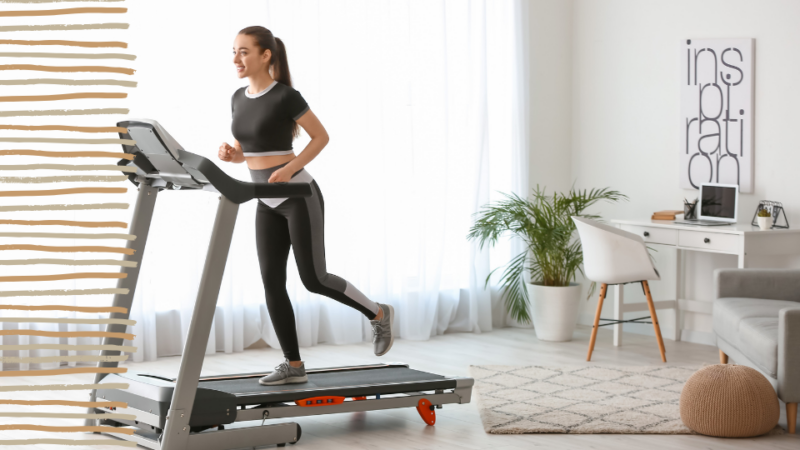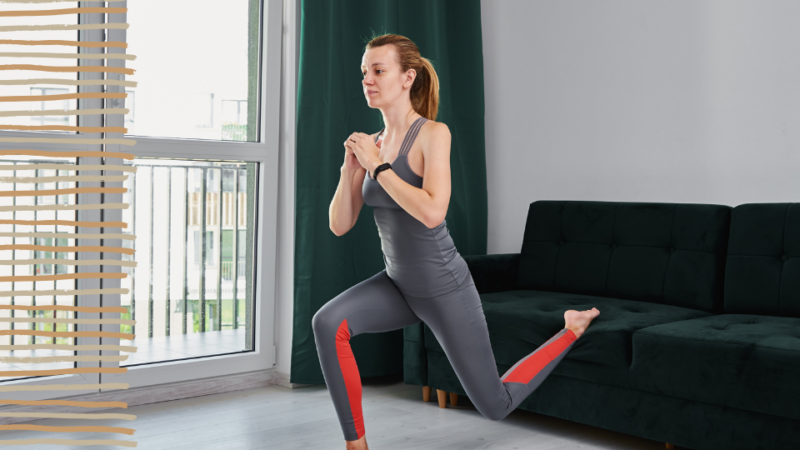Everyone
wants
the
fastest
way
to
burn
fat,
and
for
years,
HIIT
(High-Intensity
Interval
Training)
has
been
hyped
as
the
ultimate
solution.
Short,
explosive
bursts
of
movement,
dripping
sweat,
and
the
promise
of
the
elusive
“afterburn
effect”
make
it
sound
like
the
only
real
option.
But
what
if
I
told
you
that
an
easier,
more
sustainable
approach
could
be
just
as,
if
not
more,
effective?
Low-intensity
steady-state
cardio
(LISS)
may
not
come
with
flashy
marketing
or
extreme
workout
challenges,
but
it
could
be
the
key
to
long-term
fat
loss
without
exhaustion,
injury,
or
burnout.
Science
backs
it
up,
and
so
do
those
who
have
ditched
the
HIIT
madness
in
favor
of
a
gentler,
more
consistent
approach.
What
Exactly
Is
Low-Intensity
Cardio?
Think
of
it
as
exercise
that
keeps
your
heart
rate
in
a
moderate
range
for
an
extended
period.
Unlike
HIIT,
where
you’re
pushing
your
limits
for
short
bursts,
LISS
keeps
things
controlled,
consistent,
and—dare
I
say—enjoyable.
Examples
include:
-
A
brisk
walk
around
the
neighborhood -
A
casual
bike
ride -
An
easygoing
jog
where
you
can
still
hold
a
conversation -
A
steady-paced
elliptical
session -
Swimming
at
a
moderate
pace -
Nothing
extreme.
Just
consistent
movement
that
allows
your
body
to
tap
into
fat
stores
without
shocking
your
system.
The
Big
Fat
Burn:
Why
LISS
Works
Like
a
Charm
1.
Your
Body
Prefers
Fat
as
Fuel

When
you
exercise
at
a
lower
intensity,
your
body
relies
more
on
fat
for
energy
instead
of
burning
through
stored
carbohydrates.
This
is
because
of
the
way
different
energy
systems
function
in
the
body.
Your
body
has
three
primary
energy
systems:
-
Phosphagen
system
(used
for
short
bursts
of
high-intensity
effort,
like
sprinting) -
Glycolytic
system
(uses
carbohydrates
as
fuel,
primarily
for
moderate
to
high-intensity
exercise) -
Oxidative
system
(relies
on
fat
as
the
dominant
fuel
source,
used
for
lower-intensity
activities) -
LISS
allows
you
to
primarily
engage
the
oxidative
system,
meaning
a
greater
proportion
of
calories
burned
come
from
fat
rather
than
glycogen.
To
further
encourage
your
body
to
rely
on
fat
for
fuel,
you
can
incorporate
a
7-Day
Carb-Cycling
Plan
to
strategically
manage
carbohydrate
intake
while
maintaining
energy
levels.
2.
It’s
Sustainable
(Unlike
HIIT,
Which
Feels
Like
Punishment)
Let’s
be
honest.
Not
everyone
loves
HIIT.
It’s
brutal,
leaves
you
feeling
drained,
and
takes
a
toll
on
your
joints.
The
constant
jumping,
sprinting,
and
plyometric
moves
can
lead
to
overuse
injuries,
especially
for
those
who
are
not
conditioned
for
such
high-impact
movements.
LISS,
on
the
other
hand,
is
something
you
can
do
daily
without
feeling
wrecked
afterward.
Walking,
cycling,
or
light
jogging
places
minimal
strain
on
the
joints,
making
it
an
excellent
choice
for
those
who
are
overweight,
recovering
from
injuries,
or
simply
looking
for
a
more
sustainable
way
to
stay
active.
Consistency
is
key
for
long-term
fat
loss.
If
an
exercise
routine
makes
you
miserable,
you
won’t
stick
to
it.
And
let’s
be
real—forcing
yourself
through
punishing
workouts
that
leave
you
drained
isn’t
exactly
motivating.
A
pleasant
walk
outside,
listening
to
your
favorite
podcast
or
enjoying
nature?
That’s
something
you
can
actually
look
forward
to.
3.
Lower
Stress
=
Better
Fat
Loss

Over
time,
chronic
stress
can
contribute
to
hormonal
imbalances,
making
fat
loss
even
more
difficult.
Ever
heard
of
cortisol?
It’s
a
stress
hormone,
and
high
levels
of
it
can
lead
to
fat
storage
(especially
around
the
belly).
HIIT
and
other
intense
workouts
spike
cortisol
due
to
the
high
level
of
stress
they
put
on
the
body.
LISS?
Not
so
much.
It
allows
you
to
move
your
body,
burn
calories,
and
stay
active
without
triggering
an
excessive
stress
response.
In
fact,
low-intensity
movement
has
been
shown
to
reduce
cortisol
levels,
promote
relaxation,
and
even
improve
mental
health.
Ever
noticed
how
a
long
walk
helps
clear
your
mind?
That’s
the
magic
of
low-intensity
movement—it
doesn’t
just
help
with
fat
loss;
it
helps
keep
your
stress
levels
in
check,
too.
By
keeping
stress
low,
your
body
stays
in
a
fat-burning
state
rather
than
clinging
to
fat
for
dear
life.
This
is
especially
important
for
those
who
struggle
with
stubborn
fat
around
the
midsection,
which
is
often
linked
to
elevated
cortisol
levels.
4.
It
Doesn’t
Destroy
Your
Appetite

High-intensity
training
can
increase
hunger
due
to
the
rapid
depletion
of
glycogen
and
the
body’s
need
to
replenish
lost
energy.
Ever
finished
an
intense
workout
and
felt
like
you
could
eat
an
entire
pizza
(plus
dessert)?
This
can
make
it
harder
to
maintain
a
calorie
deficit,
as
intense
cravings
and
an
insatiable
appetite
may
lead
to
overeating.
LISS,
on
the
other
hand,
is
gentle
enough
that
it
burns
calories
without
sending
you
on
an
all-you-can-eat
spree.
A
steady
walk
or
a
moderate
bike
ride
won’t
leave
you
feeling
ravenous
but
will
still
help
you
maintain
an
active
lifestyle.
In
fact,
studies
have
shown
that
moderate-intensity
exercise
can
help
regulate
hunger
hormones
like
feeling,
preventing
the
post-workout
binge
that
typically
accompanies
more
extreme
training.
Additionally,
since
LISS
allows
for
longer
durations
of
activity,
you
may
end
up
burning
the
same
or
even
more
calories
over
time
without
the
risk
of
extreme
hunger
spikes.
You
can
stay
in
a
slight
calorie
deficit
without
constantly
battling
cravings,
making
it
easier
to
sustain
fat
loss
over
the
long
run.
The
Myth
of
the
“Afterburn
Effect”
People
typically
defend
HIIT
by
mentioning
EPOC
(Excess
Post-Exercise
Oxygen
Consumption),
claiming
it
burns
calories
even
after
the
workout
is
done.
While
that’s
true,
research
shows
that
the
actual
additional
calorie
burn
from
EPOC
is
relatively
small.
For
example,
a
study
published
in
the
Journal
of
Sports
Science
&
Medicine
found
that
while
HIIT
does
increase
post-exercise
oxygen
consumption,
the
overall
difference
in
total
daily
calorie
burn
compared
to
LISS
is
marginal.
On
top
of
that,
the
physical
toll
HIIT
takes
on
the
body
can
reduce
adherence,
meaning
fewer
workouts
over
time.
A
Complementary
Strategy:
Carb-Cycling
for
Better
Results
For
those
looking
to
maximize
fat
loss
while
maintaining
energy
levels,
pairing
LISS
with
an
effective
nutrition
plan
can
make
a
huge
difference.
-
Carb
cycling
involves
alternating
between
high-
and
low-carb
days
to
fuel
workouts
while
keeping
overall
caloric
intake
in
check. -
This
strategy
can
help
optimize
fat
oxidation,
prevent
metabolic
slowdowns,
and
keep
you
feeling
energized
throughout
the
week
Who
Benefits
the
Most
from
LISS?
Anyone
can!
But
it’s
especially
great
for:
-
Beginners
who
find
HIIT
intimidating -
People
with
joint
pain
or
injuries -
Those
struggling
with
stress
or
adrenal
fatigue -
Anyone
who
wants
to
lose
fat
without
feeling
wrecked -
People
who
enjoy
movement
but
not
intensity
How
to
Make
Low-Intensity
Cardio
Work
for
You
-
The
best
part?
It
doesn’t
take
much
to
get
results. -
Aim
for
30-90
minutes
per
session -
Keep
your
heart
rate
at
50-70%
of
your
max
(a
pace
where
you
can
still
talk
but
feel
slightly
challenged) -
Be
consistent
(4-6
days
a
week
is
ideal) -
Pair
it
with
strength
training
to
maintain
muscle
while
shedding
fat -
Track
progress
through
body
composition
changes
rather
than
just
weight
loss
The
Science
Behind
LISS
vs.
HIIT
for
Fat
Loss

A
2017
study
published
in
Obesity
Reviews
analyzed
multiple
studies
comparing
HIIT
and
steady-state
cardio.
The
results
showed
that
while
HIIT
burns
more
calories
in
a
shorter
time,
adherence
rates
were
lower
due
to
how
taxing
it
is.
Meanwhile,
those
who
performed
steady-state
exercise
were
able
to
sustain
their
routines
for
longer,
leading
to
better
long-term
fat
loss.
The
Bottom
Line:
Don’t
Sleep
on
LISS
High-intensity
workouts
might
sound
cool,
but
they
aren’t
always
the
best
choice
for
fat
loss.
Low-intensity
cardio
is
sustainable,
easier
on
the
body,
and
surprisingly
effective
at
burning
fat.
Plus,
it
actually
feels
good.
Forget
the
“go
hard
or
go
home”
mentality.
Sometimes,
the
best
results
come
from
slowing
down.
By
incorporating
more
LISS
into
your
routine,
you
can
achieve
fat
loss
without
unnecessary
stress,
burnout,
or
injury.
Long-term
consistency
beats
short-term
intensity
every
time.